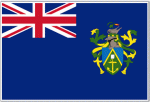Leaderboard
Popular Content
Showing content with the highest reputation on 01/19/2014 in all areas
-
How to deploy an ArcGIS Engine application using a setup project Summary: This topic shows how to deploy an ArcGIS Engine application by creating a setup project in Visual Studio. In this topic Requirements for deploying an ArcGIS Engine application using a setup project Creating the setup project and setting properties Adding application files to the setup project Setting the default installation location Creating a shortcut on the user's program menu Adding launch conditions Testing the setup.exe Requirements for deploying an ArcGIS Engine application using a setup project Review the following requirements before proceeding: An ArcGIS Engine application (called EngineWindowsApplication) using Visual Studio on a development computer has been created. The name of the EngineWindowsApplication executable in this topic is EngineWindowsApplicaiton_NoCode.exe. EngineWindowsApplication will be deployed on another Windows computer (target PC) where the host set of runtime libraries will be ArcGIS Engine Runtime. The target PC has the .NET Framework 3.5 SP1 installed. In the EngineWindowsApplication code, a call to the following method is used to target ArcGIS Engine Runtime:ESRI.ArcGIS.RuntimeManager.Bind(ESRI.ArcGIS.ProductCode.Engine) EngineWindowsApplication was built using the release version (not the debug version) in Visual Studio. This makes a smaller deployment footprint and an optimized binary file. EngineWindowsApplication has an icon embedded in the development project. This serves as the image for the shortcut that is created as part of the setup install. EngineWindowsApplication .exe is located on the hard drive in \\DevelopmentPC\image\bin. An ArcGIS Engine authorization file (.prvc) has been obtained from ESRI Customer Service to unlock ArcGIS Engine Runtime software components. EngineWindowsApplication will be deployed using a setup.exe application. Creating the setup project and setting propertiesDo the following steps to create a setup.exe: Start Visual Studio. Click File, New, then Project. The New Project dialog box appears. On the New Project dialog box, click to expand the Other Project Types node under the Project Types area, select Setup and Deployment, then select Setup Project under the Templates area. Add the following information on the new Project dialog box: Type MyEngineApp in the Name text field. Click Browse to find an appropriate location or type a location in the Location field. Type MyEngineApp in the Solution Name text field. See the following screen shot: Click OK on the New Project dialog box. The project is created and the files show on the Solution Explorer. Select the MyEngineApp project in the Solution Explorer, then press F4. The Properties window appears. On the Properties window, set the following for your application: Author—GISDeveloper. InstallAllUsers—Set to True to install for all users on the machine. Set to False if you want the application to only install for the user running the setup. Manufacturer—MyGISCompany. ProductName—MyEngineApp. Version—1.0.0. See the following screen shot: Adding application files to the setup projectThe setup project is now ready for the EngineWindowsApplication .exe file that will be deployed to the target PC. Since the image folder with the .exe already exists, add it to the setup project by dragging and dropping it into Visual Studio. On the Solution Explorer, click the File System Editor button. The File System Editor pane appears. See the following screen shot: On the File System Editor pane, there is a File System on Target Machine node and an Application Folder node. Drag and drop the \\DevelopmentPC\image\bin folder in Windows Explorer into that location. See the following screen shot: Visual Studio automatically adds any dependency files that are used by the EngineWindowsApplication .exe file into the setup project. These added dependency files are in the Solution Explorer under the Detected Dependencies folder. It is a violation of ESRI's license agreement to distribute ESRI assemblies and binary files as part of the setup project. All ESRI assemblies and binary files are installed as part of the core ArcGIS Engine Runtime installation. Remove the automatically detected ESRI assemblies and binary files by selecting them in the Solution Explorer. Right-click and choose Exclude. The only files that are not excluded are the EngineWindowsApplication .exe and the Microsoft .NET Framework. See the following screen shot: Setting the default installation locationWhen the user runs setup.exe on the target PC, the default location the install uses needs to be set. Do the following to set this location: Click the Application Folder node on the File System Editor pane, then press F4. The Properties window appears. On the Properties window, set the DefaultLocation to [ProgramFilesFolder]\[ProductName]. See the following screen shot: Creating a shortcut on the user's program menuDo the following steps to create a shortcut on the program menu when the application is installed: On the File System Editor pane, click to expand the Application Folder and bin folder nodes. Right-click the EngineWindowsApplication_NoCode.exe file, then select Create Shortcut to EngineWindowsApplication_NoCode.exe. See the following screen shot: Name the shortcut EngineWindowsApplication_NoCode.exe. The shortcut is created in the bin folder; however, the shortcut needs to be in the User's Programs Menu folder. See the following screen shot: Click the User's Programs Menu folder on the File System Editor pane. Right-click and select Add. Rename the new folder, MyEngineApp. See the following screen shot: Drag and drop the shortcut from the bin folder into the new MyEngineApp folder. See the following screen shot: See the following screen shot that shows the shortcut in the MyEngineApp folder: The shortcut will not point to the same icon as the one in the bin folder. Do the following steps to correct this issue: Select the shortcut in the User's Programs Menu > MyEngineApp folder, then press F4. The Properties window appears. On the Properties window, click the Icon property drop-down arrow, then click Browse. See the following screen shot: After you click Browse on the preceding screen shot, the Icon dialog box appears. See the following screen shot: Click Browse on the Icon dialog box. The Select Item in Project dialog box appears. Click the Look in drop-down arrow and click Application Folder, then select the bin folder that you added to the setup. See the following screen shot: Select EngineWindowsApplication_NoCode.exe, then click OK. Select the icon Visual Studio extracted from the .exe file to apply it to your shortcut. See the following screen shot: Adding launch conditionsThe setup program now knows where to place the EngineWindowsApplication .exe on disk. A successful setup program verifies that any requirements are met before allowing the installation to complete. In the case of an ArcGIS Engine application, ArcGIS Engine Runtime needs to exist first. Do the following steps to add an error message that appears if the target PC does not have ArcGIS Engine Runtime installed: On the Solution Explorer, click the Launch Conditions Editor button. See the following screen shot: After you click the Launch Conditions Editor button, the Launch Conditions pane appears with a Requirements on Target Machine node. On the Launch Conditions pane, Visual Studio has detected and added a launch condition for the .NET Framework. Right-click the Requirements on Target Machine node, then choose Add Registry Launch Condition since you know the registry key for ArcGIS Desktop. See the following screen shot: A Search for RegistryEntry1 node is added under the Search Target Machine folder, and a Condition1 has been added under the Launch Conditions folder. See the following screen shot: Click Search for RegistryEntry1 and press F4. The Properties window appears. Set the following values on the Properties window: RegKey—SOFTWARE\ESRI\Engine10.0 Value—RealVersion See the following screen shot: On the Launch Conditions pane, click to expand the Launch Conditions node, then click Condition1. Set the following properties on the Properties window: Condition—REGISTRYVALUE1="10.0" Message—ArcGIS Engine 10.0 is required before you can complete this setup. See the following screen shot: You can review what the RealVersion Value Data attribute is in Windows registry by typing regedit at a run line to open the Registry Editor, then click to expand the following nodes: My Computer\HKEY_LOCAL_MACHINE\SOFTWARE\ESRI\Engine10.0If you run the setup.exe test at this point and you do not have ArcGIS Engine 10 installed, the following dialog box appears and the installation terminates: Testing the setup.exeDo the following steps to test the setup program on the target PC: Copy the setup.exe and setup.msi files from the development PC onto the target PC. Double-click the setup.exe and proceed through the series of wizards. See the following screen shot: When the setup is complete, ensure EngineWindowsApplication is installed properly on the target PC. To check that a shortcut exists and EngineWindowsApplication runs, click Start, All Programs, MyEngineApp, then EngineWindowsApplication_NoCode.exe. See the following screen shot: You can also look on the hard drive for the specified location as part of the setup to view where the EngineWindowsApplication .exe was placed. See the following screen shot: A successful setup program also uninstalls all files on the hard drive, as well as remove any shortcuts. To test the uninstall, open the Add or Remove Programs dialog box in the Control Panel and click Remove for the MyEngineApp program. See the following screen shot: When the uninstall is complete, EngineWindowsApplication is no longer available as a shortcut, and all MyEngineApp files and directories (pertaining to the MyEngineApp application) are removed from the hard drive.http://help.arcgis.com/en/sdk/10.0/arcobjects_net/conceptualhelp/index.html#/How_to_deploy_an_ArcGIS_Engine_application_using_a_setup_project/0001000002ws000000/ I found it useful1 point
-
Intel , which bought McAfee in 2010, will rebrand its subsidiary as Intel Security. But Intel will keep the logo we all know well -- that red shield that lives on many of our computers' toolbars. The announcement was made Monday by Intel CEO Brian Krzanich at the Computer Electronics Show in Las Vegas. The software will remain unchanged except for changing the name from McAfee Security to Intel Security. The iconic red McAfee shield will remain, for now, and some components of the mobile versions of the software will be free to use on iOS and Android devices. The rebranding is expected to take up to a year to complete. source : http://news.cnet.com/8301-1009_3-57616756-83/intel-kills-off-mcafee-security-brand/1 point
-
1 point
-
Hello, My background is in Simulation programming, and after a while in this industry I want to change. I have done a bit of GIS programming in my work, as visualisation is important in simulation I've written DEM importers and 3D visualisers, etc. I have even used ESRI ArcMap a few times many years ago but nothing recently. I've mainly used C# and C++, but have done not much web based. I have always enjoyed the geographic elements of programming which is why I want to get more into "GIS". I would like to also do field work. I resent being behind a computer so much and want to be outdoors more. A 50/50 split I think would be ideal. Over here in the UK I check out the jobsites but there is not too much GIS work about, especially not in my domain. I'm not sure where I would fit in but I expect I will have to move to another country. Given these desires (field work, GIS) what role might I fit into, how could I progress towards obtaining this role?1 point
-
Announced today during BlackBerry Live 2013, BBM is set to go cross-platform this summer. That means BlackBerry, iOS and Android users will able be able to chat seamlessly over BBM very soon. Cross-platform BBM is long overdue but is sure to make for plenty of happy BlackBerry users in just a few months. The rollout will first include just chat, but soon to follow will be BBM Voice, BBM Video and even BBM Channels. Users on iOS and Android will get the same features of BBM that BlackBerry users already have so it should be pretty exciting. Best of all? It will still be totally free. nice news for android and iOS users source : http://crackberry.com/bbm-go-cross-platform-summer1 point
-
1 point
-
1 point
-
and here i am all along thinking it was Key Lime Pie =)1 point
-
Copy cloud services now has a special free give away for online storage. You get 15 GB for free, + 5GB for each referral. What makes Copy different from most other cloud services (such as Skydrive and Dropbox) is that it has no limitation on file size. So perhaps it is interesting for remote sensing purposes/syncing of smaller projects, since those images can sometimes be too large to be accepted by other services. Also the pricing is attractive, if you are into that (group users etc.) See the link below: https://copy.com?r=AMB6mp1 point
-
hmm, MS is really serious about metro I see. MS is wearing new look everywhere, even the age old hotmail has a new look.1 point
-
Interesting plugin, I just lurking into those sites, sound promising for building Webgis based on Joomla thanks for my friend that actually bring this stuff on FB and I've been able to discover and searching in deep from their sites, it said : you can see the demo here : [hide] http://gis.wis.ro/ [/hide] you can make interchangeable base and overlay layers some function are : but the bad parts is, you need to buy it for 65 pound sound promising, in Joomla only few plugin for GIS or WebGIS, this plugin, sound professional :shocked:1 point








